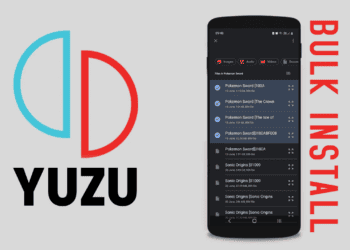When it comes to broadcasting a live video stream for your audience, there are various viable options from building your own live-streaming software or using a third-party solution. However, using a live streaming API can be a versatile option to add live-streaming features to an existing application or even a brand new software.
However, choosing the right live streaming API can still pose a significant challenge, as the API you choose to integrate with your software can influence the performance and end results in various ways.
With that being said, here we will answer some key questions to ask when choosing a live streaming API.
What Is Live Streaming API?
An API, or Application Programming Interface, is an interface between two (or more) computer programs that define interactions between these programs.
With that being said, a live streaming API is an API between a live streaming software and another software. With a live streaming API, an application or software can interact with the live streaming software, allowing this application to gain live streaming capabilities.
From the user’s perspective, using a live streaming API on your application or software allows them to use live streaming features without leaving your application (or in some cases, a website).
A live streaming API is typically designed to integrate with the backend of a software/application to provide the following features:
- Starting (or stopping) a new live stream
- Changing the name and description of a live stream
- Renaming and editing recorded live streams
- Changing the live stream settings for privacy and monetization
- Add/edit logo and brand elements
- Switch between multiple live video sources (i.e. different camera angles on the same event)
- Add buttons for sharing, volume control, resolution toggle, etc.
- Change the video player size to a specific size based on the user’s device
What Are The Benefits of a Live Streaming API?
There are actually various benefits of using the right live streaming API, namely:
1. Piggybacking
One of the key benefits of using a live streaming API rather than building the live streaming features from scratch is piggybacking: we can get the live streaming functions on an app without the lengthy and complicated development process. With this, we can launch the live streaming app faster to win more customers quickly.
Typically piggybacking a live streaming API to existing software is very easy: simply write a short core explaining the parameters, and the live streaming API can be integrated with almost any platform from a website to a mobile app.
2. Automation
A live streaming API allows us to automate repetitive and time-consuming tasks that might not be possible if we build our own live streaming software. For example, we can integrate a live streaming API that allows us to automate encoding and uploading videos. Typically these automation features are integrated into the API itself, so you won’t need any advanced coding knowledge to do this.
3. Versatility
With the support of a live streaming API, you can have more versatility in designing your own application or software. You can, for example, retain your custom branding and leverage the live streaming API to add live-streaming functionalities, and you can even integrate other APIs with other functions to further enhance the application.
What Features Will I Need?
Most live streaming APIs offer more or less similar basic functions, but different platforms might offer their unique features.
So, in choosing between different live streaming APIs, in general, you’ll need to consider how these unique features will align with your objectives. You should first identify your objective in using a live streaming API (or live streaming application in general) and list which features are critical for your objectives.
Iotum professional live streaming API, for example, offers the following features:
- HD 1080p resolution with less bandwidth
- Adaptive algorithms to provide the best resolution possible according to the available network bandwidth
- Two-tier video streams to provide high and low bitrates for a more seamless experience
- Clear, super wideband audio up to 192 kbps
- Lightning-fast initial rendering
- Record and share the on-demand recording link
- Secure connections with built-in GDPR compliance and HIPAA eligibility
Is There Any Limit Request?
Since a live streaming API is typically public-facing, a key concern is DDoS (Denial of Service Attacks), and to avoid this issue, many live streaming APIs employ a threshold system to limit the number of requests per IP address or per API key per day.
While this approach is good for protective measures, as a client this can be an issue in the long term. Check whether the API employs this limit request, and check whether your application can fit within this limit. If not, try to ask the API vendor whether you can get an exception, or seek another option.
Is The Customer Support Any Good?
Check whether your chosen API vendor offers adequate technical support and resources.
A live streaming API is quite complex, and integrating it with your application can lead to various problems. For example, there might be errors in your code that are hard to identify on your own.
This is where having great customer support can be extremely valuable so you can quickly fix any problems that arise without disrupting your application’s performance.
Conclusion
While using a live streaming API does offer various benefits, choosing the right one for your needs can be quite challenging. On the other hand, whether you choose the right live streaming API, or not, can have very significant effects on your app’s performance.
Above, we have discussed some important considerations when choosing between different live streaming APIs, and you can use the information above to make a better-informed decision when choosing your live streaming API.





